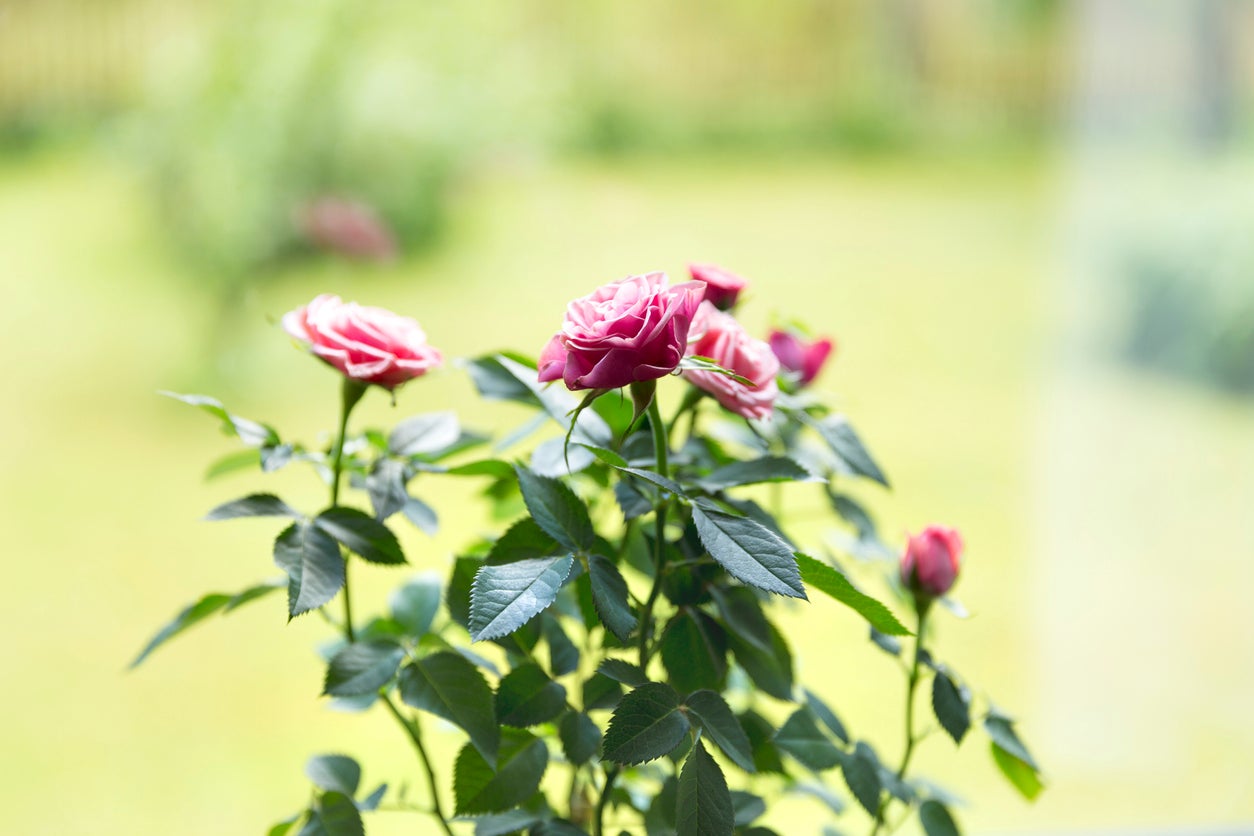
Source www.gardeningknowhow.com
Introduction:
Growing mini roses indoors can be a delightful and rewarding experience for gardening enthusiasts. These miniature versions of the classic rose bring elegance and beauty to any indoor space. With proper care and attention, you can enjoy their stunning blooms and fragrance throughout the year. In this article, we will guide you through the essential steps to ensure the healthy growth and vitality of your indoor mini roses.
Miniature roses, often referred to as patio roses or container roses, have become increasingly popular among indoor gardeners due to their manageable size and variety of colorful blooms. By following the right techniques, you can successfully cultivate these captivating plants in your home, adding a touch of nature’s beauty to any room.
Choosing the Perfect Mini Rose Variety
Identifying Ideal Indoor Mini Rose Varieties
Before embarking on your indoor mini rose gardening journey, it’s crucial to select the right variety that thrives well within the confines of your home. Opt for a miniature rose variety specifically bred for indoor cultivation, as these typically have smaller bushes and more ideal growing habits for indoor environments. Some popular mini rose varieties for indoor gardening include:
- Red Cascade: This trailing variety produces stunning deep red blooms and is perfect for hanging baskets or cascading arrangements.
- Fairy Rose: With its delicate pale pink flowers, the Fairy Rose adds a touch of whimsy and charm to any indoor space.
- Golden Miniature: If you prefer yellow hues, the Golden Miniature is a vibrant option that brightens up any room.
- Cherry Doll: As the name suggests, this variety showcases beautiful cherry-red blooms and is perfect for tabletop displays.
Providing Optimal Growing Conditions
Mini roses require certain conditions to thrive indoors, mimicking their outdoor counterparts as closely as possible. Here are a few key factors to consider when providing the optimal growing conditions for your indoor mini roses:
- Lighting: Mini roses need abundant sunlight to grow and flourish. Place your plants near a south or southwest-facing window to ensure they receive at least six hours of direct sunlight each day. Alternatively, you can use full-spectrum artificial lights to supplement natural sunlight.
- Temperature: Maintain a cool indoor temperature between 60-70°F (15-21°C). Mini roses prefer cooler conditions and may not tolerate extreme heat or cold.
- Humidity: Roses thrive in humid environments. Increase humidity levels around your mini roses by placing a tray filled with water and pebbles beneath the plants or using a humidifier.
- Air Circulation: Good air circulation is essential to prevent diseases and keep your mini roses healthy. Ensure proper ventilation in the room where your plants are located.
Table: Mini Rose Care Calendar
Here’s a comprehensive breakdown of the care tasks you should perform throughout the year to keep your indoor mini roses thriving:
| Month | Care Tasks |
|---|---|
| January | Inspect plants for pests and prune any dead or damaged branches. |
| February | Resume regular watering and monitor soil moisture levels. |
| March | Begin fertilizing bi-weekly with a balanced rose fertilizer. |
| April | Transplant or repot mini roses if necessary. |
| May | Pinch off spent blooms to promote new growth. |
| June | Prune lightly to shape the plants and remove any suckers. |
| July | Monitor for pests and diseases. Apply appropriate treatments if needed. |
| August | Reduce watering and allow plants to enter a dormant period. |
| September | Resume regular watering and fertilizing. |
| October | Move plants to a cooler location for the winter months. |
| November | Monitor indoor temperature and humidity levels. |
| December | Prepare for the next growing season by cleaning, pruning, and planning. |
Frequently Asked Questions (FAQ)
Q: Can mini roses be grown indoors all year round?
A: Yes, mini roses can be grown indoors throughout the year. However, they may benefit from a short dormant period during the winter months to prepare for the next growing season.
Q: How often should I water my indoor mini roses?
A: Water your indoor mini roses thoroughly whenever the top inch of soil feels dry. Avoid overwatering or allowing the plants to sit in standing water, as this can lead to root rot.
Q: Do indoor mini roses require regular fertilization?
A: Yes, regular fertilization is essential for the healthy growth and blooming of indoor mini roses. Use a balanced rose fertilizer and follow the package instructions for application frequency.
Q: What are some common pests that can affect indoor mini roses?
A: Aphids, spider mites, and thrips are common pests that can infest indoor mini roses. Regularly inspect your plants for signs of pest activity and treat infestations promptly.
Q: Can I propagate mini roses from cuttings?
A: Yes, mini roses can be propagated from cuttings. Take a healthy stem cutting from a mature plant, dip it in rooting hormone, and plant it in a well-draining potting mix. Keep the cutting humid and moist until roots develop.
Conclusion
Growing mini roses indoors is a rewarding endeavor that brings the beauty and elegance of roses into your living space. By selecting the right variety, providing optimal growing conditions, and following a regular care routine, you can enjoy the stunning blooms and fragrance of these miniature treasures throughout the year. Take the time to nurture your indoor mini roses, and they will reward you with their captivating charm and beauty.